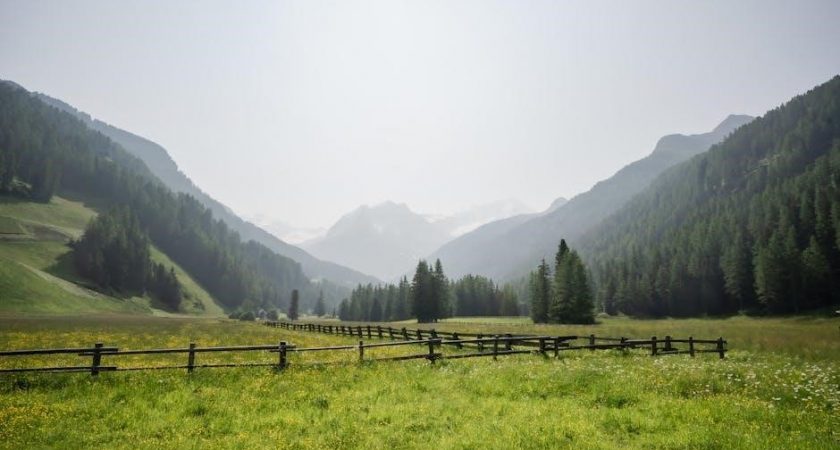Alps Guides offer expert knowledge for navigating Europe’s iconic mountain range, ensuring safety and unforgettable experiences. Their expertise covers routes, conditions, and cultural insights, making your Alpine adventure seamless and enriching.
The Significance of the Alps as a Destination
The Alps are one of the most iconic and sought-after mountain ranges globally, offering breathtaking landscapes, diverse ecosystems, and a rich cultural heritage. As a destination, they attract millions annually, catering to outdoor enthusiasts, nature lovers, and historians alike. The Alps are not only a hub for activities like hiking, skiing, and mountaineering but also a biodiversity hotspot, hosting unique flora and fauna adapted to high-altitude environments. Their historical and cultural significance is profound, with ancient trade routes, medieval villages, and diverse linguistic traditions shaping the identity of the region. The Alps also hold economic importance, supporting tourism, agriculture, and renewable energy initiatives. Their allure lies in their ability to inspire awe, foster adventure, and preserve a testament to Europe’s natural and human history.
A Brief History of Alpine Guiding
Alpine guiding traces its roots to the 18th century when local mountaineers began assisting explorers and scientists in navigating the Alps. The profession gained prominence in the 19th century with the rise of alpinism, as climbers sought skilled locals to lead them safely through treacherous terrain. The Alpine Club in London, founded in 1857, played a significant role in popularizing guided expeditions. Early guides were often farmers or hunters, possessing deep knowledge of the mountains. The establishment of formal training programs and certifications, such as the UIAGM (Union of International Mountain Leader Associations), standardized the profession, ensuring higher safety and expertise. Today, Alpine guides are integral to exploring the Alps, blending tradition with modern techniques to provide unforgettable experiences for adventurers worldwide.
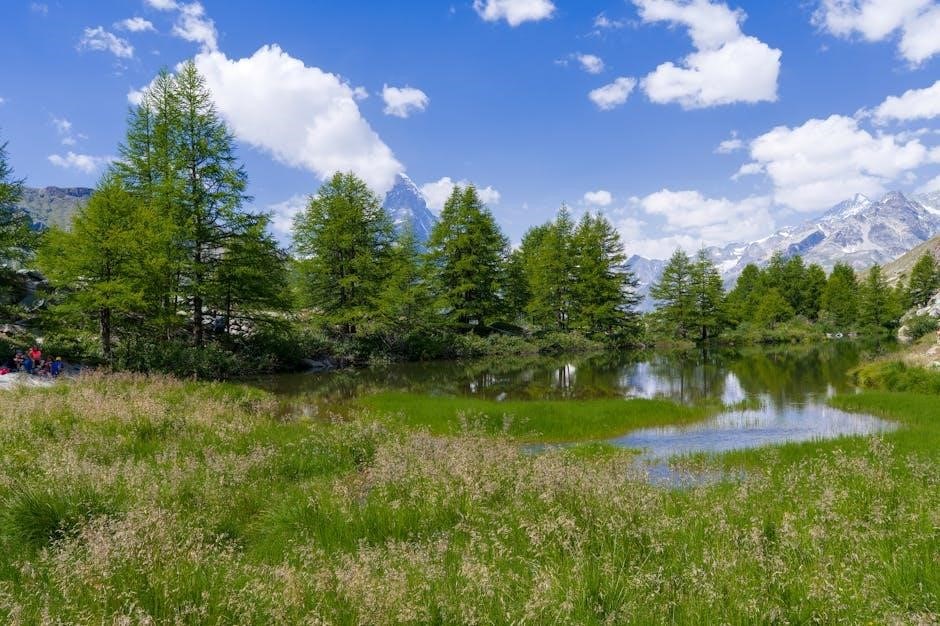
Planning Your Alpine Adventure
Plan your Alpine adventure by setting clear objectives, assessing your skill level, and selecting routes that match your experience. Research weather, permits, and local regulations to ensure a smooth journey. Proper preparation includes booking accommodations, arranging transportation, and securing gear. Consider hiring a certified guide for expert guidance, especially for challenging routes. A well-planned itinerary allows you to fully enjoy the breathtaking landscapes and unique cultural experiences the Alps offer while staying safe and prepared for any situation.
Essential Gear and Equipment for Alpine Exploration
Exploring the Alps requires careful preparation with the right gear to ensure safety and comfort. Start with sturdy, waterproof hiking boots or mountaineering shoes, depending on your activity. Dress in layers using breathable, moisture-wicking fabrics to adapt to changing temperatures. A waterproof jacket and pants are crucial for unpredictable Alpine weather. Don’t forget a backpack with enough space for essentials like water, snacks, and extra clothing. Navigation tools such as a map, compass, and GPS device are vital, especially in remote areas. A first aid kit, emergency shelter, and headlamp are must-haves for unexpected situations. For glacier or technical routes, include crampons, an ice axe, and a rope. Always check your gear before departure to ensure it’s in good condition.
Best Seasons to Explore the Alps
The Alps offer breathtaking experiences year-round, but the best seasons for exploration depend on your preferences. Summer, from June to September, is ideal for hiking and trekking, with warm weather and lush landscapes. Autumn, between September and November, provides stunning foliage and cooler temperatures, perfect for scenic walks. Winter, from December to March, is prime for skiing, snowboarding, and ice climbing, attracting adventure seekers worldwide. Spring, from March to May, brings mild conditions and blooming wildflowers, great for lower-altitude hikes. Each season highlights the Alps’ unique beauty, so choose based on your activity and tolerance for crowds or cold. Plan accordingly to make the most of your Alpine adventure.
Safety in the Alpine Terrain
Navigating the Alps requires preparation for unpredictable conditions, proper gear, and awareness of hazards like avalanches and steep terrain. Guides enhance safety and decision-making.
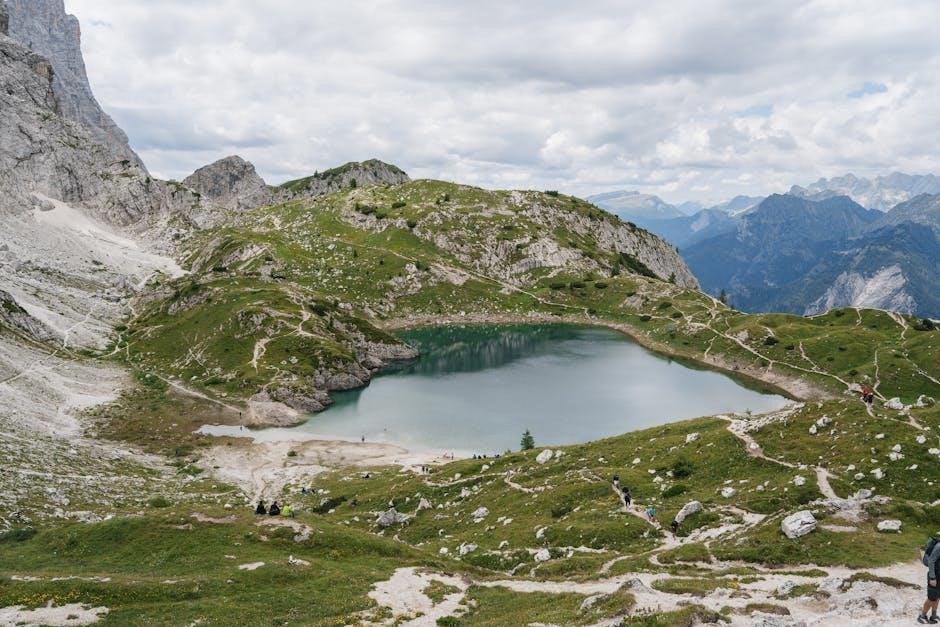
Understanding Alpine Weather Patterns
Alpine weather patterns are notoriously unpredictable, with conditions changing rapidly due to altitude and microclimates. Guides play a crucial role in monitoring these shifts, ensuring safe navigation. They utilize forecasts, terrain knowledge, and real-time observations to anticipate risks like avalanches or storms. Their expertise allows them to make informed decisions, adapting routes to avoid hazards. Understanding weather patterns is vital for assessing snow stability and route feasibility, ensuring a secure and enjoyable experience. Guides’ deep familiarity with local conditions enables them to interpret signs of changing weather, providing critical insights that might not be apparent to less experienced explorers. This knowledge is key to minimizing risks and maximizing safety in the challenging Alpine environment.
Navigation and Map Reading Techniques
Mastering navigation and map reading is essential for safely exploring the Alps. Guides are skilled in interpreting topographic maps, understanding contour lines, symbols, and scales. They can identify key landmarks, assess terrain difficulty, and pinpoint potential hazards. Traditional navigation skills, such as using a compass and triangulating positions, are complemented by modern tools like GPS devices and altimeters. Guides ensure accurate route tracking and altitude monitoring, especially in challenging conditions like fog or snowstorms. Their expertise in map reading helps prevent wrong turns and minimizes risks. Additionally, guides often teach clients how to orient maps and use compasses, enhancing their ability to navigate independently. These techniques are vital for ensuring a safe and successful Alpine adventure.
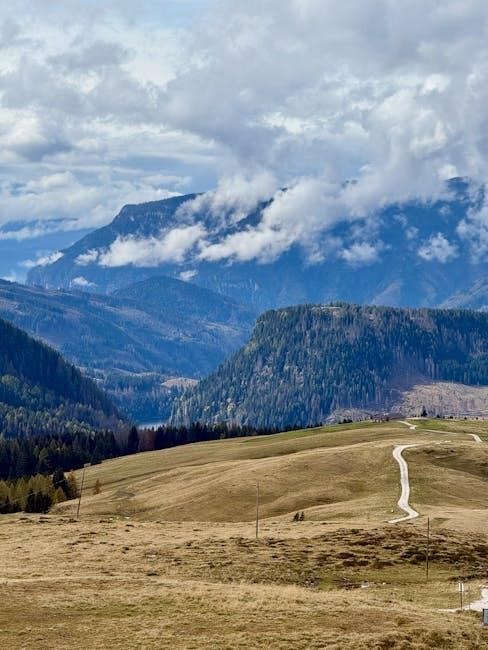

Popular Alpine Routes and Trails
The Alps boast iconic routes like the Tour du Mont Blanc and challenging climbs like the Matterhorn, attracting adventurers worldwide with their breathtaking landscapes and diverse terrains.
Famous Trails like the Tour du Mont Blanc
The Tour du Mont Blanc is one of the most renowned trails in the Alps, offering a 170-kilometer circuit around the highest peak in the Alps. It spans across France, Italy, and Switzerland, showcasing breathtaking mountain vistas, alpine meadows, and charming villages. This trail is a favorite among hikers and trekkers, blending challenging terrain with rewarding scenery. The route typically takes about seven to ten days to complete, with well-marked paths and refuges providing accommodation for adventurers. Its popularity stems from its diverse landscapes, from lush valleys to glacier-carved peaks, making it a must-do experience for outdoor enthusiasts. The trail’s iconic status attracts thousands annually, offering a mix of physical challenge and unforgettable views;
Challenging Climbs like the Matterhorn
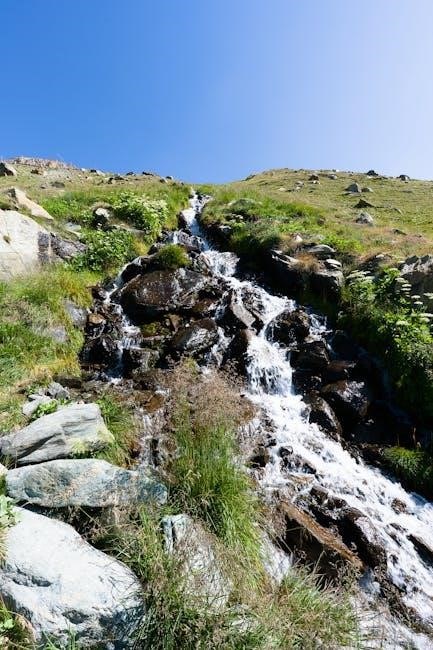
The Matterhorn stands as one of the most iconic and challenging climbs in the Alps, renowned for its steep, pyramid-like peak and demanding routes. Located on the border of Switzerland and Italy, it rises to 4,478 meters, attracting skilled climbers worldwide. The climb requires advanced mountaineering skills due to its exposed ridges, icy surfaces, and unpredictable weather conditions. Routes like the Hörnli Ridge and the Lion Ridge offer varying degrees of difficulty, with the Hörnli being the most popular yet still hazardous. Climbers must navigate crampons, ice axes, and ropes while managing altitude sickness. The first ascent in 1865 marked its place in mountaineering history, yet it remains a formidable test of endurance and skill. The Matterhorn’s allure lies in its breathtaking views and the prestige of conquering one of the Alps’ most formidable peaks, making it a bucket-list challenge for many mountaineers.
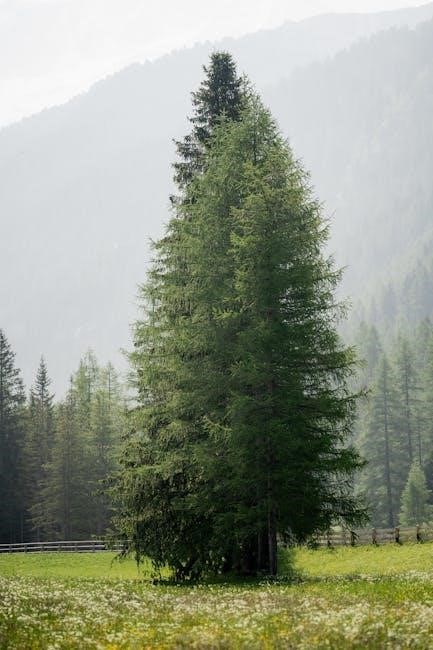
Hiring a Certified Mountain Guide
Hiring a certified mountain guide ensures safety, expertise, and a tailored Alpine experience. Guides provide local knowledge, route planning, and technical skills, enhancing your adventure while minimizing risks.
Benefits of Hiring a Professional Guide
Hiring a professional guide offers numerous advantages for Alpine explorers. They provide expert navigation, ensuring safe passage through challenging terrain and unpredictable weather conditions. Guides also offer deep local knowledge, revealing hidden gems and historical insights that might otherwise go unnoticed. Additionally, they manage logistics, allowing you to focus on enjoying your adventure. Their technical skills and emergency response training add an extra layer of safety. Moreover, guides can tailor the experience to your fitness level and interests, making the journey more personalized and fulfilling. This expertise not only enhances your adventure but also contributes to preserving the region’s delicate environment and cultural heritage.
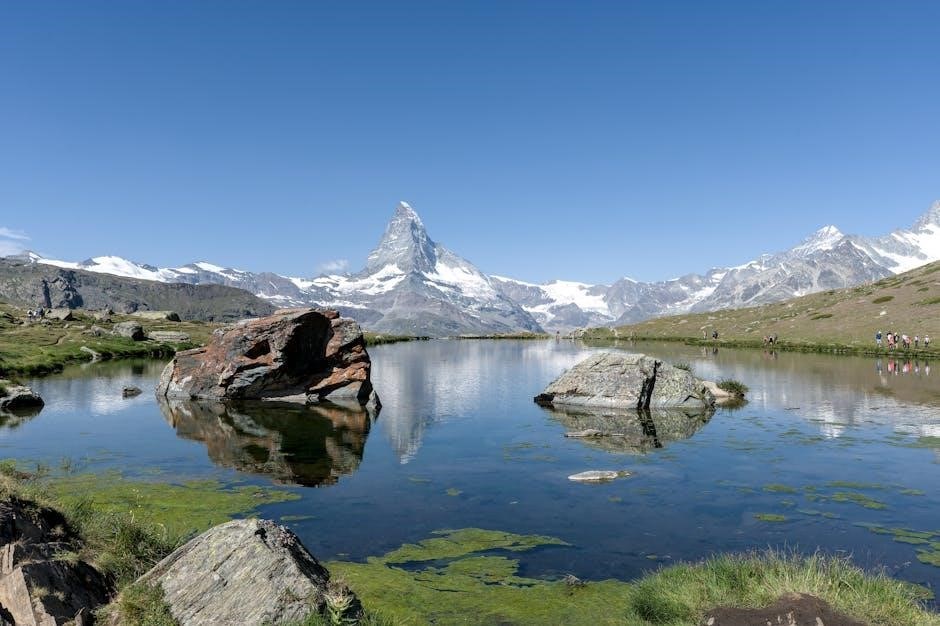
How to Find the Right Guide for Your Needs
Finding the ideal Alpine guide involves several key considerations. First, verify their certification, such as UIAGM or IFMGA, ensuring they meet international standards. Experience in your desired activity, whether hiking, climbing, or skiing, is crucial. Seek reviews and testimonials from past clients to assess reliability and expertise. Communication is vital, so ensure they speak your language fluently. Discuss your goals, fitness level, and any constraints to tailor the experience. Compare services and costs, but prioritize quality over price. Many guides are affiliated with local mountaineering organizations or tour operators, which can enhance credibility. Finally, ensure they carry proper insurance and emergency response plans. By carefully evaluating these factors, you can select a guide who aligns perfectly with your Alpine adventure goals.
Environmental and Cultural Considerations
Exploring the Alps requires mindfulness of both nature and local traditions. Eco-friendly practices like minimizing waste and staying on trails protect the fragile Alpine ecosystem. Respecting local cultures, such as regional customs and historical sites, enriches your journey while preserving community heritage. Balancing adventure with responsibility ensures the Alps remain pristine for future generations to enjoy.
Eco-Friendly Practices in the Alps
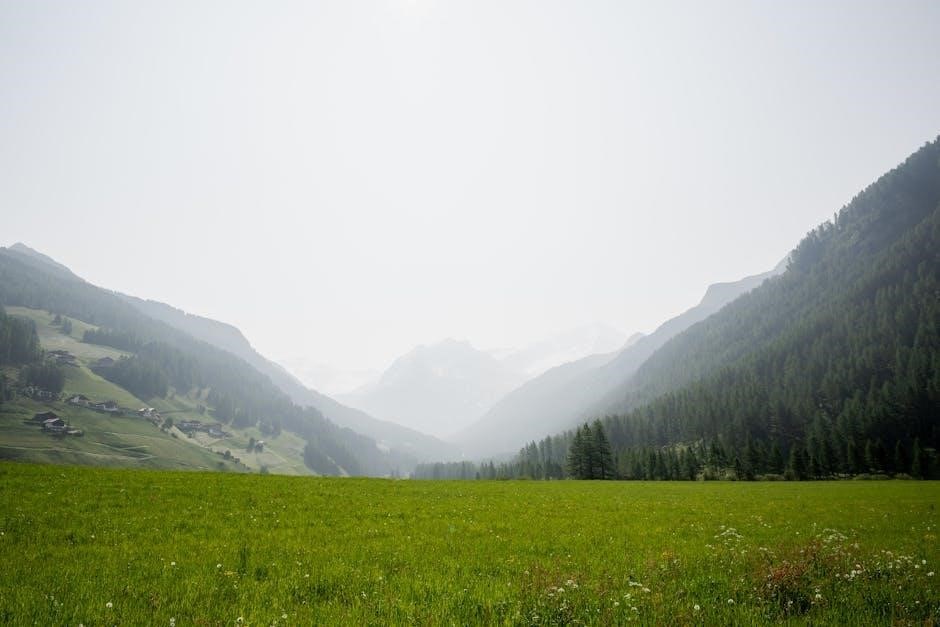
Practicing eco-friendly habits is crucial while exploring the Alps to preserve its pristine environment. Carry reusable water bottles and avoid single-use plastics to minimize waste. Stay on designated trails to protect sensitive flora and wildlife habitats. Dispose of waste properly and take all litter with you to maintain the region’s natural beauty. Supporting local eco-conscious businesses and choosing sustainable accommodations also contribute to environmental conservation. By adopting these practices, you help safeguard the Alps’ biodiversity and scenic landscapes for future generations to enjoy. Remember, leaving no trace ensures the mountains remain untouched and vibrant for everyone.
Respecting Local Cultures and Traditions
Respecting the rich cultural heritage of the Alpine regions is essential for a meaningful and harmonious experience. The Alps are home to diverse traditions, languages, and customs, shaped by centuries of history. Visitors should learn a few phrases in the local language, such as French, German, or Italian, to show appreciation for the community. Understanding and respecting local customs, like attending a traditional festival or visiting historical sites thoughtfully, fosters a deeper connection with the region. Supporting local artisans and businesses by purchasing regional products also contributes to preserving the cultural identity of the Alps. By embracing these practices, travelers can enrich their journey while honoring the unique heritage of the Alpine communities they encounter.
